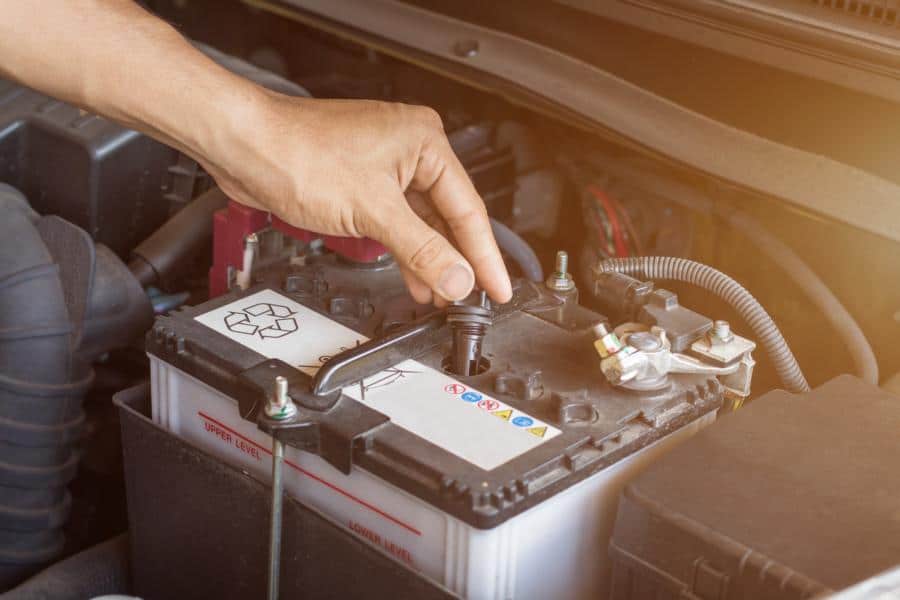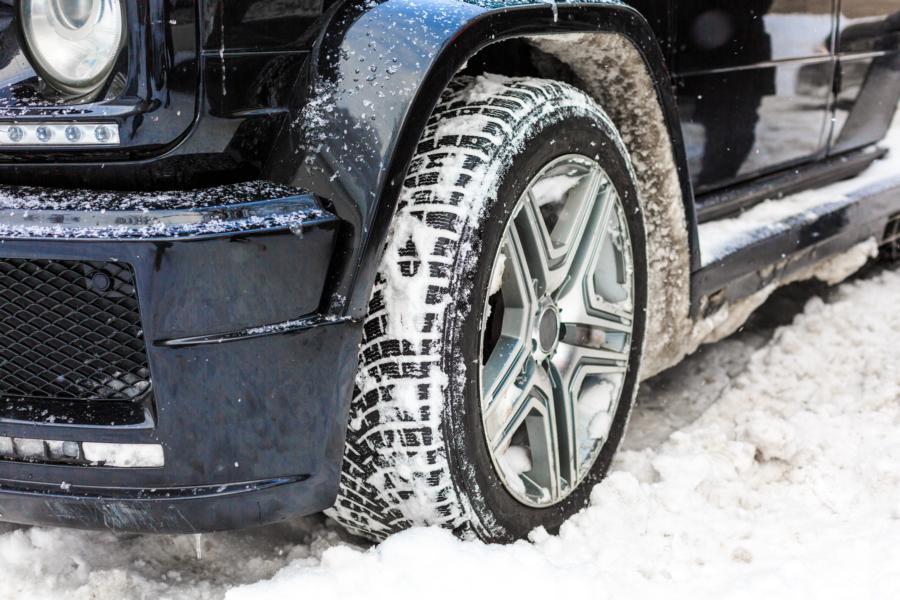Your Winter Car Checklist
As we move into the winter months, we’re going to be updating our blog with different systems and components you need to check in your car to make sure it’s running properly for the winter season!
The heating system
Imagine it’s a cold morning and you bundle up to head to work. You scrape the frost off your windshield, hop in the car and your driving down the road. Your turn your heater up.
You drive a few more minutes waiting for the heat to kick on. Nothing happens. Now what? Unfortunately, this can happen to drivers.
Your heater isn’t the most vital part of your car but during the winter months, it sure can make a big difference!
Before the weather gets too cold, make sure you are checking your heating system to save yourself the chance of a chilly ride to work (or farther!).
The coolant is one of the most important parts to a heating system. The coolant warms the heaters core and if it’s too low, it might not be able to warm the air that blows on the passenger compartment.
If you haven’t checked your coolant lately, take precautions and bring your car down to your local shop and we’ll check it for you! If your coolant is full and your heat still isn’t working, it could be signs to a bigger problem or a malfunctioning component.

You should always check your tires
No matter what season we’re transitioning to, you should always check your tires. Sudden drops in temperature will cause your tires pressure to decrease, which means you should have an air pressure gauge on you and be familiar with how to fill your tires with air.
Driving conditions tend to worsen in the winter due to the combination of snow, sleet and rain. Worn tires can be danger in winter weather. Examine your tires to ensure they have enough tread left and don’t suffer from uneven wear or any cuts or nicks. Be sure the check your spare and jack, as well.
You might choose to switch your tires in the winter to snow tires or winter tires. When the temperature is consistently around freezing or below freezing, the rubber compounds in non-winter tires harden which decreases the tire’s ability to grip the road.

Winter tires use special compounds engineered to resist hardening in cold temperatures and provide better traction. Mounting winter tires can give you an advantage when driving through snow, sleet, or icy conditions. If you do want to switch out your tires to winter tires. make sure your change all four tires.
Also if you plan on driving in snowy conditions often this winter, keep chains handy in your car and know how to install them.
Battery Check
Today we’re talking about a very important component of your car: your battery.
Did you know that batteries are more likely to die in the winter when cold temperatures hit? When the cold weather comes to town, power output drops, ability to accept a charge drops, so the battery doesn’t recharge as quickly and the load of the car increases, as you use your lights, blowers, wipers, heated seats, rear-screen heater, etc and all of those are hard on your battery life.
According to Interstate Batteries, your battery loses 33 percent of its power when the temperature dips below freezing and over 50% of its power when the temperature falls below zero. Before you head into the winter months, where the cold could beat up your battery even more, make sure it’s in the best condition possible.
TLC is offering free battery checks so that you can rest assured that your battery is ready for winter.
The last thing you need is to get stuck in the cold or to try to turn your car on during a cold winter morning when you’re running late to work so get your battery tested for free today!
Some of the common fluids in your car
Here’s a brief list of fluids to check, replace or have on hand:
Engine Oil or Motor Oil
Engine oil is an important topic that we talk about often on this blog because oil is the lifeblood of your car. Engine oil thickens when it gets cold, which makes it harder for the engine to turn over.
It’s important to check your owner’s manual for the manufacturer’s recommendation for the type of oil to use in your car. Your car might require lower-viscosity oil in the winter or you need a multi-viscosity oil that can be used for winter use. Viscosity just refers to how thick or thin a fluid is. Most newer cars already use oils that can withstand cold weather but some older cars might require low-viscosity oil.
You can also always check with your local mechanic for the type of oils used and what is best for your car!
Wiper Fluid or Windshield Washer Fluid
Did you know that snowy or rainy days, you can go through half a gallon or more of windshield washer fluid, trying to keep your windshield clear. For that reason, it’s important to check your windshield wiper fluid before a big snow or ice storm and make sure you have some extra fluid in your trunk, just in case you run out or are going on a long trip.

Antifreeze Fluid
Antifreeze, which is what goes in your radiator, will protect your car in the winter temperature. Engine coolant should be a 50/50 mix of water and antifreeze because it has a lower freezing point. Make sure the level is full and the mixture is as close to 50/50 as you can get it.
Power Steering Fluid
Your power steering fluid will keep your steering smooth and easy, which is extremely important when your driving on snowy and icy roads. Power steering oil doesn’t get low too often but if you can never remember checking it, it might be time to do so or ask your mechanic too!
Lights
During the winter season, we have less daylight hours so you want to ensure your lights are in working condition and ready to go.
Check all of your interior and exterior lights, including indicators and turn signals are working properly. Additionally, check your full beam headlights and fog lights to make sure the bulbs work properly. Be sure to check for any external cracks or blow bulbs. If any of your bulbs are burned out, replace them immediately.
Also, it’s important your lights are clean. Road grim, snow and dirt can accumulate on your lights preventing full visibility. To prevent scratching, make sure you do not use a dry rag, instead use a slight damp rag. You can also wax your lights to squeeze out as much light as you can of your lights.
If your lights are not working properly, even when bulbs are replaced, bring your car into your local mechanic to ensure there are no wiring problems and that your lights will work properly this winter season.

Emergency Kit
We’ve spoken about different aspects of your car that you want to ensure are working perfectly so you are able to enjoy a safe driving experience all winter long. We’ve discussed your heating system, winter tires, car battery, fluids, and lights.
This is the last section and instead of talking about parts of your vehicle to check out, we’re reviewing the importance of having an emergency roadside kit inside your car.
If you have been following our suggestions in the previous sections, you should be able to avoid any road emergencies this winter but it’s always good to be prepared just in case something were to happen.
A good roadside emergency kit will help you provide short-term fixes for your vehicle, if possible, stay warm, attract help and stay safe.
Here are some things we recommend keeping in your car
- Abrasive material for the road, such as sand or salt, which can give you traction if you get stuck somewhere
- Snow brush and shovel to help keep your car from getting buried in case of heavy snow
- Flashlight with extra batteries to keep your vehicle lit in the case it breaks down in the dark and to help attract attention
- Jumper cables in case your battery dies
- Window washer solvent because window fluid can get used up quickly with heavy ice and snow
- Warning devices such as flares or triangles to attract help and ensure your car is seen by passing motorists
- First aid kit
- Drinking water and non-perishable snacks, just in case you are stuck for a few hours
- Gloves, hats and blankets in case your heating system goes on the fritz
- Mobile phone and car charger to call for help
Remember, if you have any worries about your vehicle running smoothly this winter season, do not hesitate to bring it in to your trusted mechanic to have a check up. It is always better to be safe than sorry, especially during the cold season!
We hope you’ve enjoyed this article on your winter car safety checklist from TLC Auto & Truck Repair Service Center and we look forward to providing more helpful information to you!
Winter isn’t the only danger that causes problems: Primary causes of car accidents in Long Island NY









